By Marc Coenen
Photos by author except where noted
In the early hours of Sunday, August 11, 2019, a fire erupted in an abandoned supermarket in Beringen, Belgium. Two firefighters lost their lives and a third was severely burned. That fateful night, I was the fire officer on duty.
In February 2020, the Federal Public Service Home Affairs released the incident report on the fire. One of the conclusions reads as follows: “The different teams were deployed in a logical manner by the officer.” That was a relief, but my feelings of guilt did not disappear. On the contrary, they only grew. How could it be that, despite my logical and rational approach, the outcome was so terrible? My search for answers kicked up a gear, and I frantically began reading up on neurology, psychology, philosophy, and genetics. I had to figure out the anatomy of that fatal fire at any cost.
- Lessons Learned from the Grenfell Tower Fire
- Construction Concerns: Responsibility
- Are Current Fire Prevention and Education Models Failing Us?
- The Grenfell Tower Fire and Fire Safety Materials Testing
- The Grenfell Tower Fire: A Closer Look
What have I learned from all that research? The starting point of each incident is the way our mind filters out sensory cues for further processing and the intuitive thought processes that determine the cognitive framework wherein all those bits of information will be interpreted. For this reason, I propose adding the “I” of Intuition and Incident type to the model of reading the fire. Thus, I speak of the model I-BE-SAHF.

Anatomy of a Fatal Fire. What Have I Done Wrong?
Marc Coenen offers profound insights into the conscious and unconscious processes that shape our actions on the fireground.
Verification vs. Falsification
To get a better grip on the complexity of our world, we put everything in distinct categories, and by means of the scientific method we build models and hypotheses based on past experiences. Subsequently, we try to verify and strengthen those models through systematic control.
The fire service does exactly the same thing. In Belgian fire academies, for example, a distinction is made between three different kinds of fire development:
■ Ventilated fire development
■ Underventilated fire development
■ Structure fire
Strategies for incident commanders and nozzle techniques for firefighters are linked to these different types of fire development. With such a static division into categories, the fire service risks losing sight of more than just the dynamics of fire. The classification is not wrong, per se, but along the way we may overlook that categorization always implies a reduction in complexity. Reducing the complexity of the world around us can entail considerable risks when sources of uncertainty are being ruled out. This may even lead to us not fully understanding how the world really works because we are blinded by how little we know and grossly underestimate everything we do not—and cannot–know. This also applies to fires, as they are by far more complex than the simplified models we are taught at the fire academy.
One source of uncertainty on the fireground, for example, is that you as incident commander (IC) do not know for sure if your identification of the fire development is correct when you are plotting the strategy. Furthermore, fire is an extremely dynamic process that simply cannot be locked in a single category. Instead, fires will jump from one category to another when the conditions allow it.
The standard firefighting technique of reading the fire or the BE-SAHF model is applied in Belgium when it comes to determining fire development. By correctly interpreting these cues (building, environment, smoke, air, heat, and flame), the IC can assess the development stage of the fire and predict the future development. To comment in detail on all these cues goes beyond the scope of this article, so I will limit myself to a discussion of smoke, in a nutshell.
When you light the wood stove at home, you will have in the beginning light-colored smoke. In this phase, water vapor and decomposition gases are dominant in the smoke. In the early stage of a fire, the amount of smoke inside a room is limited. As the pressure builds up, the light-grey smoke begins to escape slowly. Depending on the amount of fuel or oxygen available in the room, the smoke changes color during the development stage of the fire:
■ In the case of a ventilated fire development, the smoke becomes darker and eventually will turn pitch black.
■ In the case of an underventilated fire or a shortage of oxygen, the color of the smoke changes to yellowish brown.
As the temperature rises, the pressure builds up and the smoke starts to exit the room at an increasing speed.
The Austro-British philosopher of science, Karl Popper, argued that a good theory can only be refined or refuted by demonstrating its falsity. He calls this falsification or the search for evidence to the contrary.
In our enthusiasm, we have failed to falsify the BE-SAHF model. In all our live-fire trainings, we do little more than constantly verify the model within the same strict, well-defined settings. For example, the layout of the containers or the burn building of the fire academy used for live-fire training is meticulously described and defined for each of the various scenarios. The fire load is also carefully calculated, with exactly the same amount of chipboards and wooden laths used for each run. All these measures are necessary to ensure firefighter safety during training.
The BE-SAHF model is a theoretical model of reading the fire that has its origin in empirical observations made during fires attended by firefighters all over the world, but its field of application has never been established. As a result, that technique is now de facto applied to all fires in or of buildings, as if it were a one-size-fits-all application. Were we to falsify the model, then the need to establish the field of application would immediately become apparent.
Thus, empirical observations are the starting point of the BE-SAHF model. However, if history has taught us anything, then it is certain that learning from observations or experience has severe limitations and can lead to erroneous conclusions. Did humankind not think for a long time that the earth was a flat disk, and that the sun revolved around the earth? Even in the year 2024, we still fall into the trap of drawing the wrong conclusions from empirical observations.
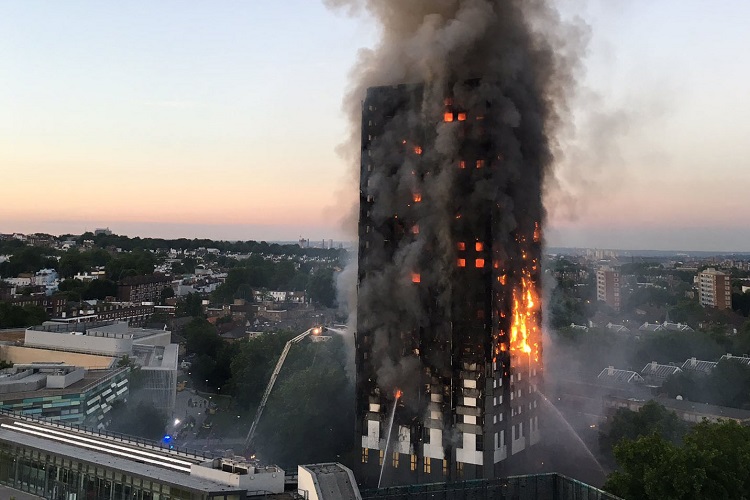
For the fire service, the Grenfell Tower Fire in London on Wednesday night June 14, 2017, shows this at a macro level. The incident report indicates that the Grenfell Tower Fire started at 12:54 a.m. on the fourth floor in the kitchen of flat number 16. The fire service arrived on scene five minutes later. But at 1:09 a.m. the fire escapes from the kitchen and gets into the external cladding that envelops the residential tower block for insulation purposes. Five minutes later, the fire service starts their interior attack in the kitchen of flat number 16. Even before the start of the interior attack, the fire development had already fundamentally changed. The ventilated fire development in the kitchen expanded to a structure fire.
Do you spot the danger of categorizing the fire development that I have just pointed out? For the sake of clarity, I emphasize that our London colleagues did not and could not have known this at that time. They did not have the benefit of hindsight, as you and I have now. This example shows that, in the event of a fire, a strategy can be outdated even before it has been deployed. To make things worse, ICs are unable to switch quickly between strategies. Because of inattentional blindness or confirmation bias, they just stick to their plan of action. As long as a fire does not jump from one category to another, our strategy will be good. However, when fire development changes too radically, ICs tend to get stuck in their first strategy and are prone to making erroneous judgments.
Even more interesting is the fire development in the exterior cladding of the tower block. Grenfell Tower was not the first high-rise residential block where the exterior cladding caught fire. What was new, however, was that the behavior of the fire deviated from the standard empirical expectation that we as a fire service had in the event of a fire in the exterior cladding of a tower block. What behavior did we expect?
In the past, this kind of fire always spread rapidly up the outside of the building, and once the soaring flames had reached the top, they simply went out by themselves. Such was the case in Dubai at the Torch Building and the Address Downtown hotel. In the exterior cladding of the Lacrosse Building in Melbourne, the fire development was identical. Initially, the fire in the Grenfell Tower behaved in a similar way. The fire climbed at a relatively slow speed of four meters per minute to the top. At 1:27 a.m., it reached the upper floor. In 18 minutes, the fire had climbed from the fourth to the 23rd floor, and then something occurred that had never happened before.
Whereas in other residential tower blocks the fire stopped once it had reached the top, the fire found additional fuel in the architectural crown atop the building. Like the exterior cladding, that cornice was made of polyethylene. On exposure to heat, polyethylene melts and begins to drip. This petroleum derivative can, furthermore, flow while burning and generate burning droplets. At the architectural crown, the fire split in two directions. Gravity pulled the burning droplets down, and most of them ended up in the insulation surrounding the tower. To make a long story short, the fire traveled around the top; in the exterior cladding the fire did the same, but across the facades and from top to bottom. Within a few hours, the fire engulfed almost the entire building.
Back to Karl Popper’s falsification theory: Verifications of theories prove nothing; only falsifications can refute them. From all the fires in the exterior cladding of high-rise residential blocks before Grenfell Tower, the fire service should never have assumed that this would be the standard fire development.
Instead of assuming that fires in the exterior cladding always stop after having reached the top (and do not enter the building through the windows on their way up!), the fire service should have wondered why all those fires went out by themselves once they reached the top of the building. It would have been fairly easy to figure out that in the past the fires stopped because of . . . lack of fuel. In other words, after falsification, the standard fire behavior that we assumed for all high-rise buildings before the tragic Grenfell Tower Fire can now only be upheld for those high-rise residential blocks where the roof is made of noncombustible material. In August 2021, this was confirmed in the southern outskirts of Milan, Italy. In the Torre dei Moro building. In this instance, the fire could spread from the thermal covering on one facade of this 20-story apartment block to the panels attached to the other facade via the technical installations on the roof, as they were made of combustible materials. By means of falsification, we define a field of application where this or that fire development is applicable.
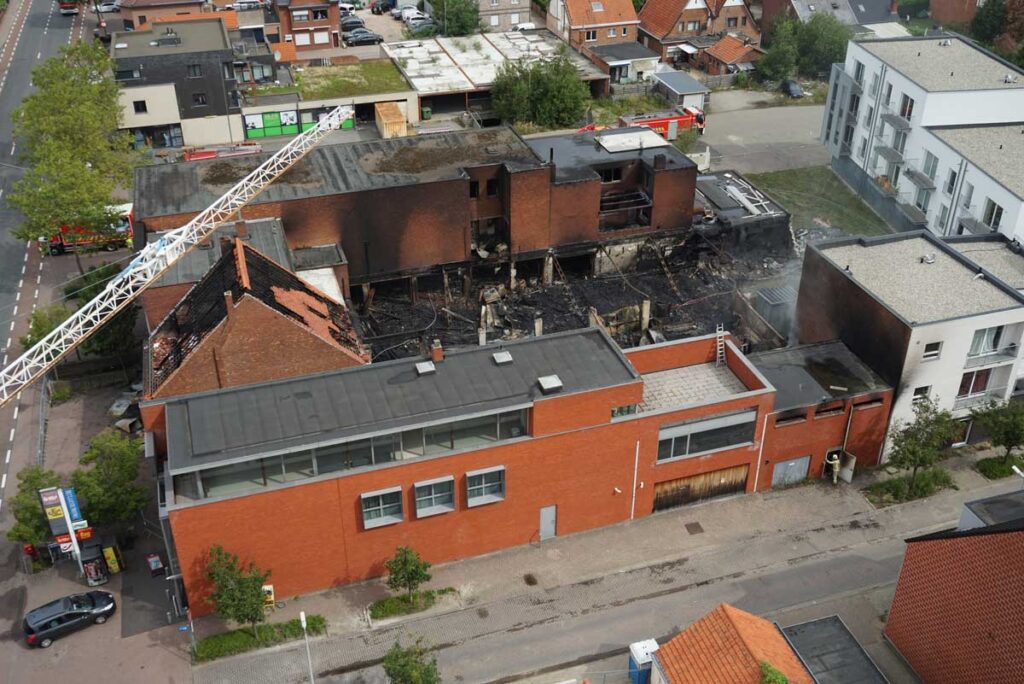
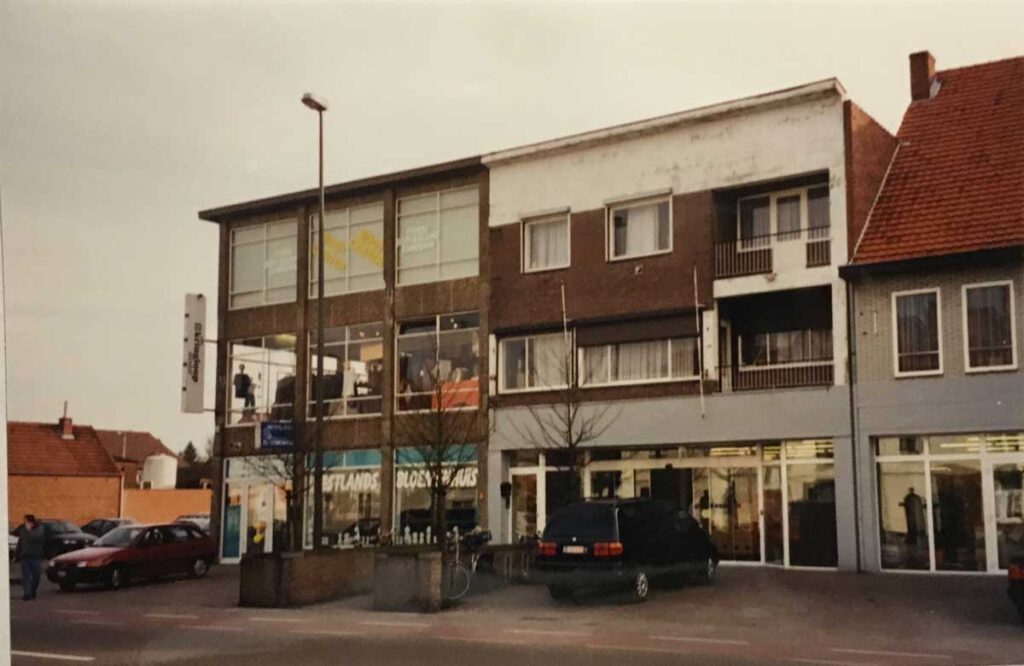
The Limits of Models
In the fire service, there is more to falsify than just the fire development in the facade cladding of tower blocks. I already stated that the BE-SAHF model is based on empirical observations or fireground experience. Like each IC, I used that model that night in Beringen. And all my observations matched seamlessly with a ventilated fire development.
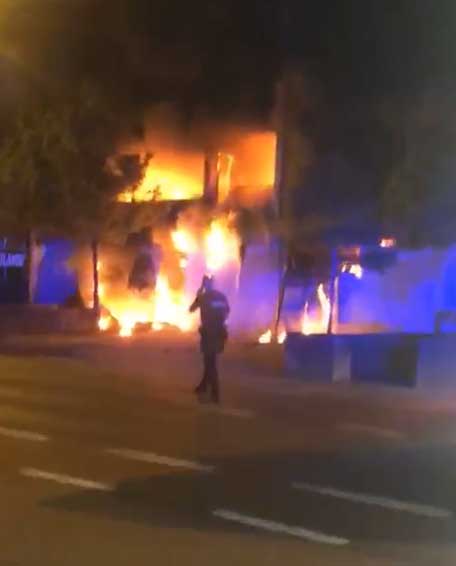
Upon arrival, I found a raging fire at the front side of the abandoned supermarket. I conducted my 360° initial size-up around the structure. At various places, I perceived grey-black smoke slowly leaving the building. That did not surprise me. The fire at the front caused the air pressure to rise inside the supermarket, and that overpressure slowly pushed the smoke out through various openings. After the fire at the front was extinguished, the smoke kept coming. There must be a second seat of fire. Meanwhile, the team that I have sent in via Saint Barbara Street reported a kitchen fire. This confirmed my idea of a second seat of fire. Everything fit perfectly in the BE-SAHF model because I could always link the smoke to a seat of fire. But then the scenario changed, and from one moment to the next, nothing made sense anymore. Pitch-black smoke dropped out of the ceiling. The visibility inside was reduced to zero. The smoke was extremely hot and ignited immediately. In no time, the entire building lit up.
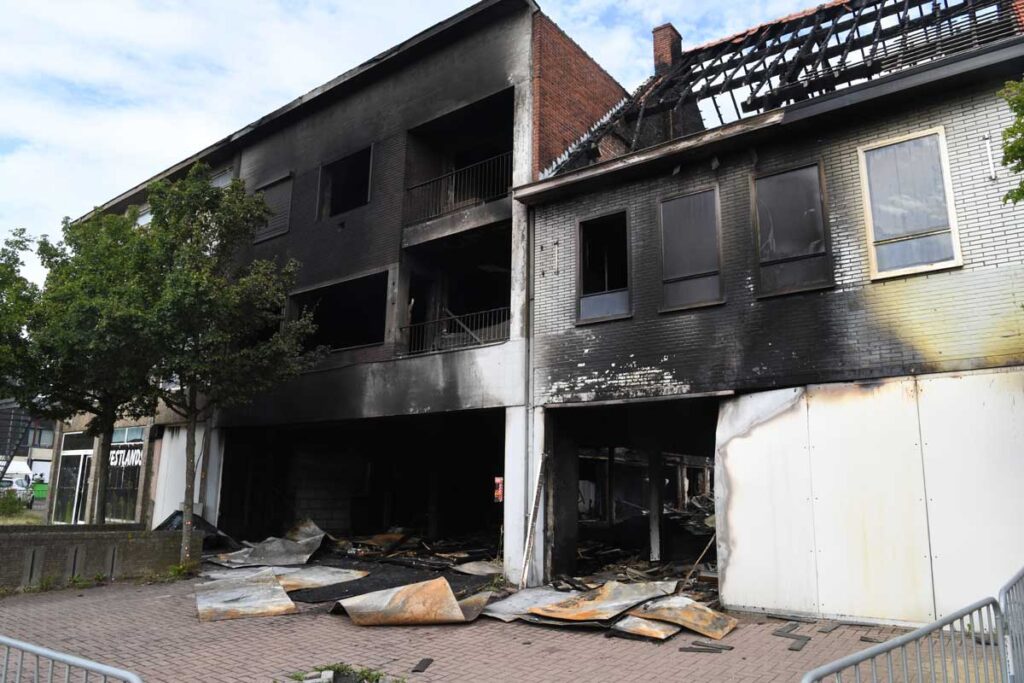

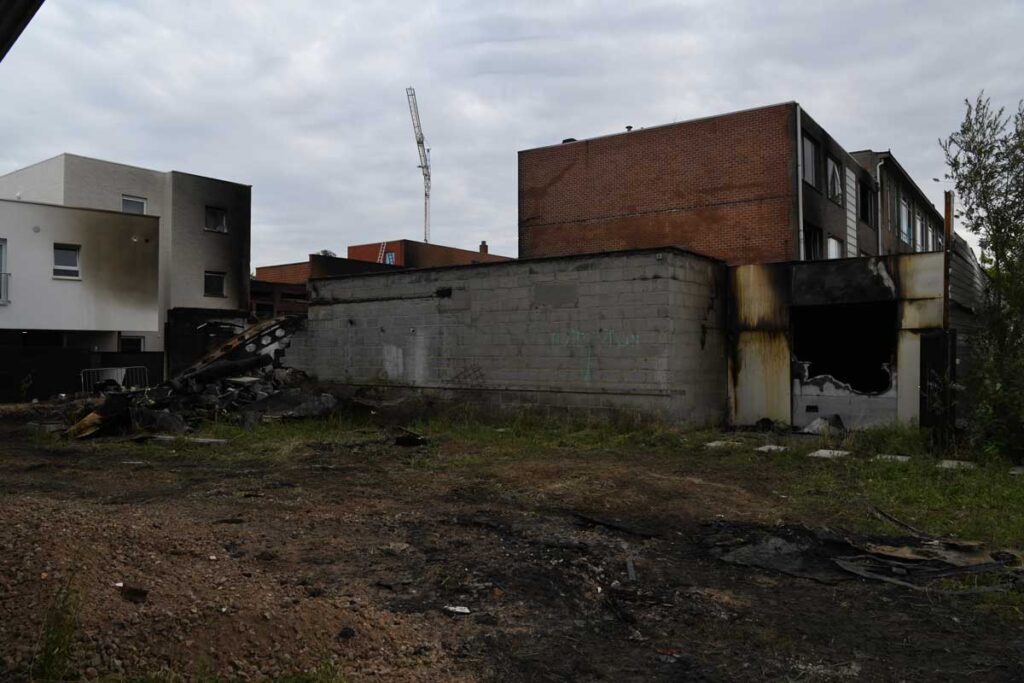
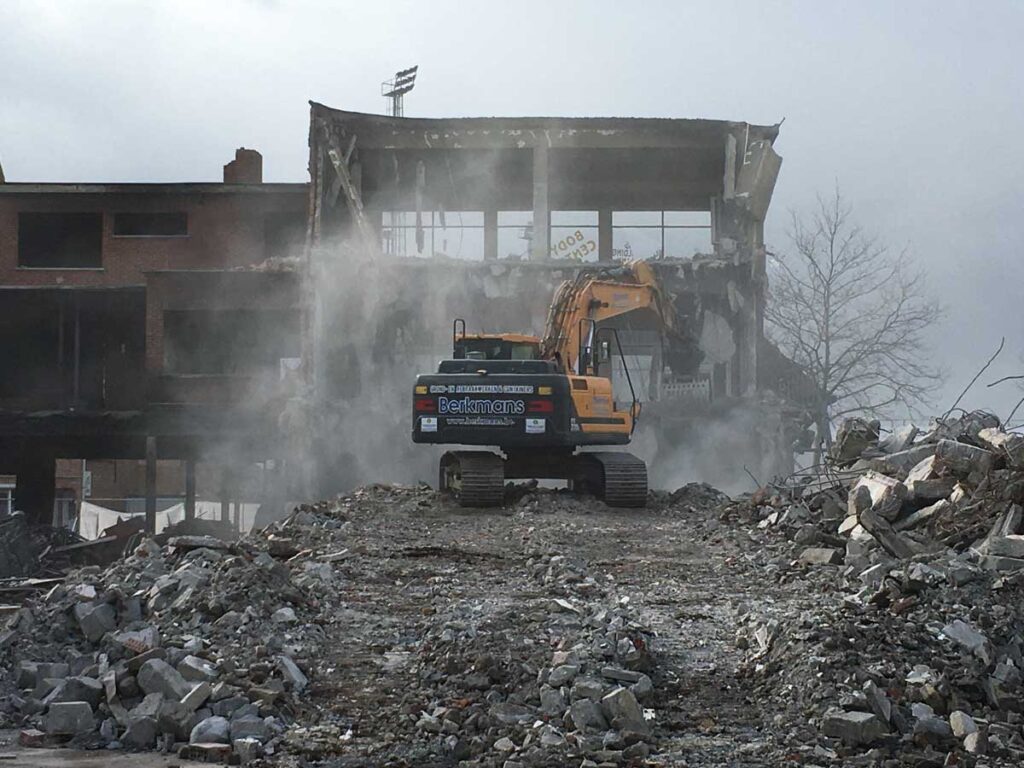
Where is the flaw in the model for reading the fire? In my opinion, we have overlooked that each time an IC reads the fire, he is not aware of the fact that he sees the incident through a particular pair of glasses. Those glasses are the incident type that he has determined subconsciously, upon arrival on the fireground, based on intuition or prior experience. I propose to add an “I” to the model of reading the fire. Hence I speak of I-BE-SAHF, where the “I” stands for two things: intuition and incident type.
What exactly do I mean when I say that the incident type intuitively or unconsciously colors—or even dominates—your reading of the fire? To clarify this, I will apply it to the type of building I had to deal with that night in Beringen: a large building. In my opinion, you can roughly choose from four types of incidents:
■ Type 1: Small fire(s) in a large building
■ Type 2: Structure fire in a large building
■ Type 3: Great fire in a large building
■ Type 4: Large building on fire
Type 1: When you are dealing with a small fire in a large building, the fire (load) is limited: for example, a machine on fire in a factory building. For such a small and manageable fire in a large building, the standard deployment is an offensive interior attack. I call this type a fire in a building.
Type 2: A structure fire in a large building implies that the structure of the building itself is the fire load. And that fire load can be huge. If you cannot get the situation under control with piercing nozzles or Fognails in an early stage of the fire development, a defensive exterior attack might well be the only safe strategy. This type I call a building on fire.
Type 3: In the event of a great fire in a large building, the fire (load) in the building is huge: for example, a fully developed fire in a mega furniture store. It’s likely that the fire will not be restricted to just the contents of the building because the building itself will also catch fire. Here, the fire service must opt for a defensive exterior attack.
Type 4: In a large building on fire, content and structure together form the fire load. An example of this type of fire known to every Belgian firefighter is the tragic fire of the Innovation department store in Brussels in 1967. A defensive exterior attack is our only option.
A large building on fire (type 4) and a great fire in a large building (type 3) are easy to recognize. The distinction between a small fire (or fires) in a large building and a structure fire in a large building is less straightforward, particularly when that large building is an empty building, as was the case in Beringen. The cues emitted by a fire in a building and a building on fire may be identical, but these fires require entirely different approaches.
The subconscious choice of the incident type by the IC based on these cues is an automatic or intuitive thought process. Prior experience and training are the personal framework of each IC. I think that this intuitive choice has already been made long before the IC has even conducted an initial size-up of the fireground.
When you spot from afar an immense, black plume of smoke on your way to a factory fire, for example, you are already scaling up before you have arrived at the incident scene. At the latest, a few moments after your arrival on scene, but surely before the start of the 360° initial size-up around the building, you unconsciously get a first impression of the situation and assess the incident.
Under the radar of consciousness and by means of selective information reduction, your unconscious has effortlessly and rapidly reduced the observed situation to thin slices of information and filtered out the essential cues. In this manner, an IC intuitively grasps the severity of the fire and assesses whether crews can or cannot attend to it with the material at hand and with this strategy or the next. Then the IC does a 360° size-up and starts to look for additional information that is consistent with their first assessment of the situation or that impels them to adjust the strategy. Compare, for example, how in speed dating or casual encounters on the street, your first impression of the other person is already formed based on perceived facial expressions and attitude long before you have talked to that person.
This mode of operating is clearly discernible in the incident report of the fire at De Punt in Drenthe, the Netherlands (2008):
■ The fire apparatus leaves the fire station at 2:14 p.m. in response to a house fire. However, it concerns a fire in an indoor storeroom with a depth of 15 m that is located in a large hangar (25 m × 75 m), in which recreational boats are maintained and stored.
■ Two minutes later, when the apparatus is approaching a roundabout at the rear of the hangar, the crew sees a thick layer of brownish-yellow smoke quietly flowing out the rear of the hangar.
■ The warrant officer in the fire truck scales up to “medium fire.” An additional unit and the officer on duty are dispatched to the fireground.
■ The apparatus arrives at the scene around 2:18 p.m. In front of the hangar the situation is completely different. There is hardly any smoke; just a few patches of smoke are visible at the back of the hangar.
■ A police officer informs the firefighters that there is a car burning in the back of the hangar. The warrant officer assesses the situation again.
■ The house fire, which only a few minutes ago was intuitively scaled up to a “medium fire,” is now downsized to a car fire by exactly the same intuitive thought process.
■ After the warrant officer has given the formal order “explore and extinguish any fires,” four firefighters enter the hangar and the warrant officer starts his 360° size-up around the building.
■ At 2:21 p.m., the warrant officer scales up to “big fire.” The entire hangar is ablaze and three colleagues are still inside the building. The three firefighters perish.
Typical of this incident are the big differences between the cues picked up by the warrant officer when he and his colleagues were driving up to the fire and those picked up upon arrival at the fireground. Time and time again, he intuitively assessed the dynamically changing situation all over again, and this only on the basis of the limited new information that had become available. His strategies form, as it were, a series of consecutive but completely distinct intuitive judgements. The scaling up during the approach is no longer relevant when they have pulled up in front of the hangar and the incident is intuitively reduced to a car fire.
That is exactly how intuitive thought processes work. Central in the decision-making process stands the coherence or logical consistency of the story that the warrant officer has managed to put together, but that narrative is based on whatever information happened to be available. The amount and quality of the data on which that interpretation is based are largely irrelevant. The previous intuitive impressions/judgments could not play a significant role as only a few seconds later they were put into question and subsequently discarded based on completely different sensory cues. That day, the intuitive judgments, which neglect ambiguities and suppress doubts, undeniably worked to the disadvantage of the fire service.
The theory taught in fire academies is that you do the 360° size-up before establishing the strategy. However, the practice is completely different. Long before an IC does his size-up around the building, he already has a first impression of the incident and a broadly outlined course of action. Because of his unconscious tendency toward self-confirmation (confirmation bias), those elements that confirm his first assessment will easily capture his attention during the size-up. Signals that are in conflict with that assessment are more prone to be overlooked, disregarded, or explained away. And the longer the IC has used a theory or strategy, and the richer and more consistent his narrative becomes over time by all the details and the new information he has managed to integrate, the harder it gets to puncture that precarious bubble of improbabilities. The problem with theories and strategies is that they are inherently sticky. Once you have put together a theory or strategy and used it as a tool in your thinking, it is virtually impossible to notice its inherent flaws.
How the IC interprets the cues of the fire upon arrival at the fireground is a direct and powerful determinant of the strategy that will be deployed. That night in Beringen, everyone thought we were dealing with small fires in a large building. All the signals emitted by the fire (e.g., smoke, flames, airway) were read and interpreted as though this were the scenario, and this led to interior firefighting. If upon arrival the incident type had been recognized as a structure fire in a large building, the same cues would have been read completely differently and we would have handled the incident in another manner. The intuitive choice of the incident type— the “I” of I-BE-SAHF—determines how the fire should be read and how it effectively will be read.
Nothing Human Is Alien to Us
Although further research is required, I have the impression that ICs assess the type of incident by intuitive thinking or another unconscious mode of thinking that is based on their first impression upon arrival on the fireground. A striking number of accidents in firefighting all over the world have their origin in an incorrectly determined incident type. In various incident reports of fires that have claimed the lives of firefighters, a combination of the following critical cues regularly appears:
■ Good visibility inside
■ Low temperature inside
■ Negligible amount of smoke inside
■ Smoke light in color
■ Smoke that barely flows
In the BE-SAHF model as it stands, these are all cues that are not worrisome for the IC who is standing outside, nor for the firefighters working inside the building. The signals suggest a manageable fire of limited power in the growth or decay stage of a ventilated fire development, that we firefighters can tackle with our nozzle techniques. And the successes we have repeatedly booked in the past in precisely those circumstances give us the impression that this all makes sense. In the BE-SAHF model, we came to this reading because the model’s input included the fire developments that were most common around that time, namely ventilated and underventilated fires.
But the complexity of the world is growing at a faster rate than ever. The fire service must deal more and more with structure fires. The cues emitted by this type of fire are precisely the same as those of a ventilated fire, but they must be interpreted completely differently because we are dealing with another type of incident.
In the case of a structure fire, there is no guarantee whatsoever that the conditions are still safe with the aforementioned critical cues. On the contrary, the situation indoors can change completely from one moment to the next, making interior firefighting no longer a safe option. This problem is not a uniquely Belgian one; it is ubiquitous. In the incident report on a structure fire with a fatal outcome in Massachusetts, U.S. (2007), the cues feature prominently: “Upon arrival, fire was showing through the roof with negligible smoke and heat conditions in the main dining area.” In the report on the Beringen fire we read: “There was a light stream of smoke coming out of the door as the crew went in. A light grey smoke hung from the ceiling. Its temperature was 50–60°C.” When dealing with a structure fire, the BE-SAHF model deceives firefighters, just as it does with other atypical fire developments, like a pulsating fire or a fire gas ignition.
The commission of inquiry that investigated the fatal fire at De Punt in Drenthe, the Netherlands (2008), rightly concluded that every firefighter would have done the same and fallen into the deadly error. Now, what was that deadly error? A pulsing fire, a particular kind of fire development where periods of a lot of smoke alternate with periods of no smoke.
■ Standing in front of the hangar, the firefighters only see a few patches of smoke at the very back of the building before the start of the deployment.
■ With this image linked to the information that there is a car burning at the rear left end, they decide to enter the hangar to extinguish the car fire.
■ Shortly after the firefighters have entered the hangar, the fire in the indoor storeroom at the back rekindles.
■ This time, the flames shoot through the wooden roof of the storeroom and ignite the masses of flammable smoke gases that have accumulated in the ridge of the hangar.
In a fire gas ignition in Montréal, Canada (2006), in which one colleague died, firefighters observed the following in the corridor of a residential block: “A stream of white smoke escapes from the upper corner of the door. There is still no heat.” On January 21, 2006, the Montréal Emergency Centre received a call for a suspicious odor that is hanging in the third floor of a small flat block containing six apartments. It was 3:28 a.m. According to the caller, it was not a smell of burning, but the odor stung the eyes and made one nauseous.
At 3:35 a.m., the fire service arrived on scene and members began to look for the cause of the nuisance. No smoke detectors were sounding, nor did their gas detector go into alarm. But inside the flat block, it stinks, and the smell took members breath away. Except for one, all firefighters put on the full-face mask of their breathing apparatus.
The smoke turned out to be escaping from flat number 4 on the first floor. The residents were not in. They were on holiday and had yet to return. The firefighters broke the door open. In the flat, they tried to locate the source of the smoke, and in the meantime they opened the windows so the smoke can escape.
At 3:43 a.m., the source of the smoke was found: In the living room, a seat near a window was smoldering. In the incident report, the description of the conditions inside the flat at this time is still the same: “There are no flames, no heat, there is smoke and the smell is still there.” The firefighters decided to throw the seat out the window. Crews had already disposed of the cushions and were working on the seat itself, but while they were manipulating it, a part kindled into a flame and ignited the combustible fire gases that had accumulated against the ceiling. At 3:46 a.m. the entire residential block was ablaze.

The aforementioned structure fire in Massachusetts, U.S. (2007), in which two American colleagues died while conducting an interior attack to extinguish a fire in the roof of a restaurant, deserves a closer look. The fire service wants and must learn from accidents, including incidents from different parts of the world. Both the type of building and the fire development are remarkably similar to that of Beringen. It is particularly painful to note that, 12 years after the Massachusetts incident, again two firefighters have lost their lives in similar circumstances.
In Massachusetts, a fire was raging in the cockloft of a single-story taxpayer of ordinary construction. Tax avoidance is not only in Belgium a national sport; Americans are also ardent practitioners. To evade the tax on vacant building plots, numerous commercial buildings called taxpayers were built by real estate investors from the 1900s onward. Such a commercial building houses several stores under a shared roof. In this case, the taxpayer contained four commercial occupancies.
The fire resistance between the various shops is typically minimal. The underlying idea of the taxpayer concept is to house as many stores as possible under a single roof at minimal cost. The roof contains a lot of wood and insulation through which the utility lines run, gas included.
The cockloft is the enclosed space above the finished ceiling and under the roof. As a rule, a cockloft has a thickness of approximately 1 meter and often contains void spaces. The taxpayer building in Massachusetts was an exception to the rule. Here, the roof was divided into separate compartments, as the minimal fire resistance of the walls passed through the cockloft.
A Chinese restaurant was operated in one of the commercial spaces of this retail warehouse. The total area of the restaurant was 180 m2 and it was equipped with an open kitchen of 25 m2.
■ On August 29, 2007, a fire began in the exhaust hood above the cooking stove.
■ The fire was reported at 9:04 p.m., and when the fire service arrived at the scene four minutes later, the flames begin to shoot through the roof. There was some smoke in the restaurant, and the temperature was negligible.
■ In the main dining area, a firefighter searched for fire extension above the suspended ceiling while an off-duty firefighter arrived on the scene and smashed in the front window of the restaurant.
■ The smoke and heat conditions inside the restaurant changed rapidly. Pitch-black smoke broke through the ceiling. In no time, the visibility inside the restaurant was reduced to zero and the extremely hot smoke ignited instantly.
■ That evening, two firefighters died.
The main difference with Beringen 12 years later is that in Massachusetts, the fire is already through the roof when the fire service arrives at the incident scene. When flames appear to be shooting through the roof, we are tempted to think that enough of the heat and the smoke can escape. That is not always the case. It is just one of the many assumptions or automatic thought processes in the head of firefighters.
Another difference is the size of the building: It is roughly four times smaller than the store expansion in Beringen. The most important similarity, however, is the identical development of a structure fire in a comparable type of building.
The associative nature of the human brain is designed to detect meaning in patterns. It is capable of making sense out of almost anything and it learns from repetition. What do experienced firefighters intuitively think in a building where there is good visibility, light-grey smoke against the ceiling that barely flows, and a temperature of around 50°C to 60°C? In those conditions, firefighters not only think they are safe, but they also feel safe.
An automatic thought pattern or unconscious association in the fire service is that light-grey smoke that barely flows is not dangerous. Another stereotypical association or mental shortcut that played that night in Beringen is linking smoke to a visible fire. First, the blazing fire at the front of the building was identified as the source of the smoke, and, when that fire was extinguished, the kitchen fire at the rear became the alleged source. In hindsight, most of that smoke can be linked to the structure fire in the roof of the supermarket.
Evolutionary psychology has taught us that an overly relaxed—in our case, safe—feeling can be dangerous. Emotions that make us feel uneasy often lead to a behavior that is better for us. When perceiving or suspecting danger on the fireground, fear or another unnerving gut feeling prompts us to become extra vigilant and cautious. Routine and repetition have the opposite effect; they make us less alert to potential danger and more likely to take risks. All our successes and experiences gained from previous fires play to our disadvantage when we are dealing with an atypical fire development because we are not aware that we are dealing with a totally different type of incident. The BE-SAHF model, as it stands today, only reinforces this automatic thought pattern.
Marc Coenen, PhD, an Egyptologist by training, started his career in the fire service as a volunteer officer in the Aarschot Fire Service. Now he is a career officer of the Fire and Rescue Service of South-West Limburg, attached to the fire station of the city of Beringen, Belgium.
Select bibliography
All information on the Beringen fire and how the mind works are taken from M. Coenen, Anatomy of a Fatal Fire. What Have I Done Wrong? Fire Engineering Books, 2024. It is complemented with insights from:
- S. Tremblay and A. Chiasson, Accident mortel survenu à un travailleur dans un bâtiment résidentiel situé au 12 495 Langelier de l’arrondissement Montréal-Nord, Rapport d’enquête. Diréction régionale de Montréal 2, s.l. 2008.
- Grenfell Tower Inquiry: Phase 1 Report, 4 vol., s.l. 2019.
- Chr. Gryspeert e.a., Examen et évaluation de l’incident survenu à Beringen du 11 août 2019, s.l. 2019.
- I. Helsloot e.a., Eindrapport. Evaluatie van de brand in De Punt op 9 mei 2008, The Hague 2009.
- K. Popper, The Logic of Scientific Discovery, London-New York 2002 (=1935).
- Two Career Fire Fighters Die While Making Initial Attack on a Restaurant Fire – Massachusetts, NIOSH Fatality Assessment and Control Evaluation Report (FACE) Report F2007-32, s.l. 2009.

